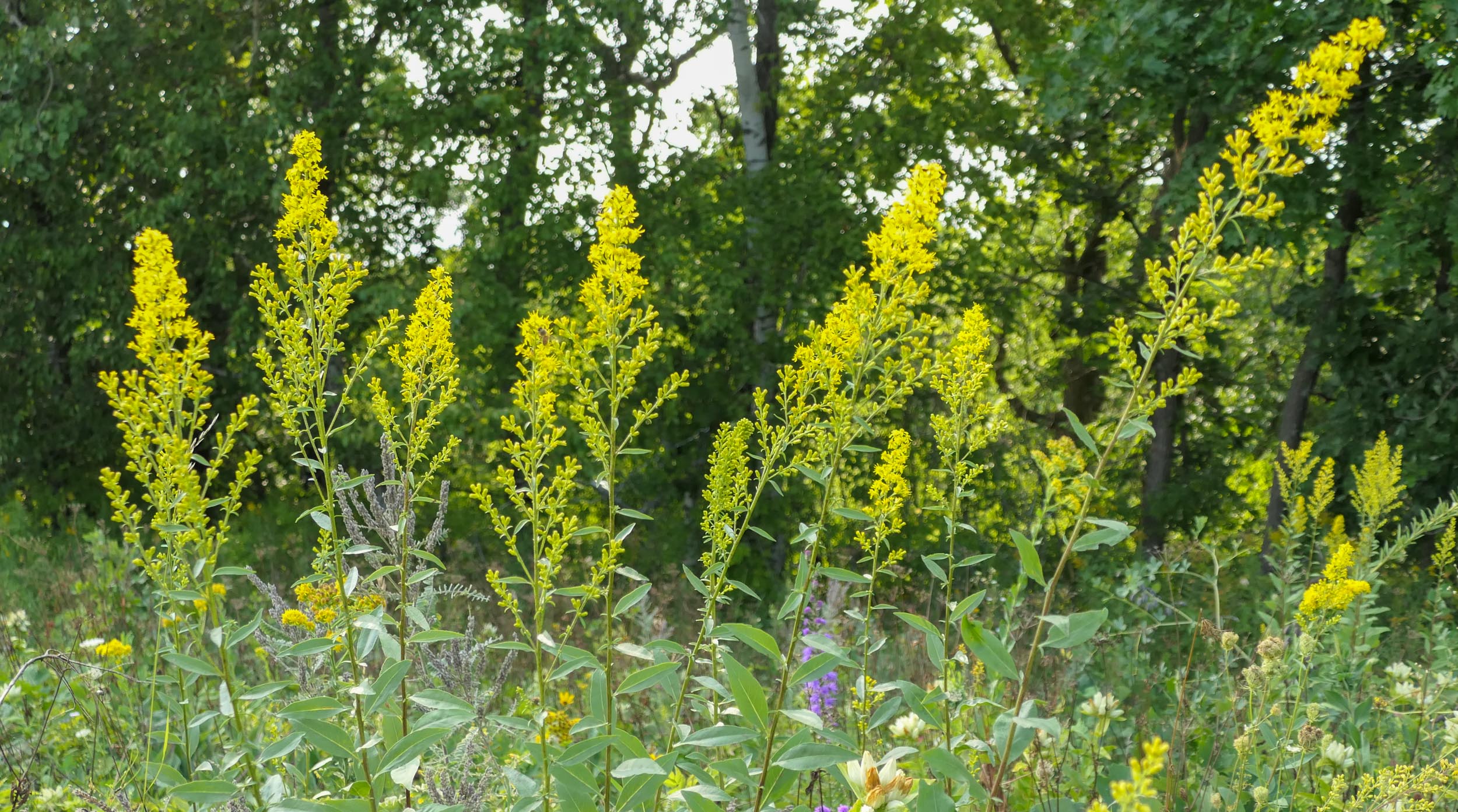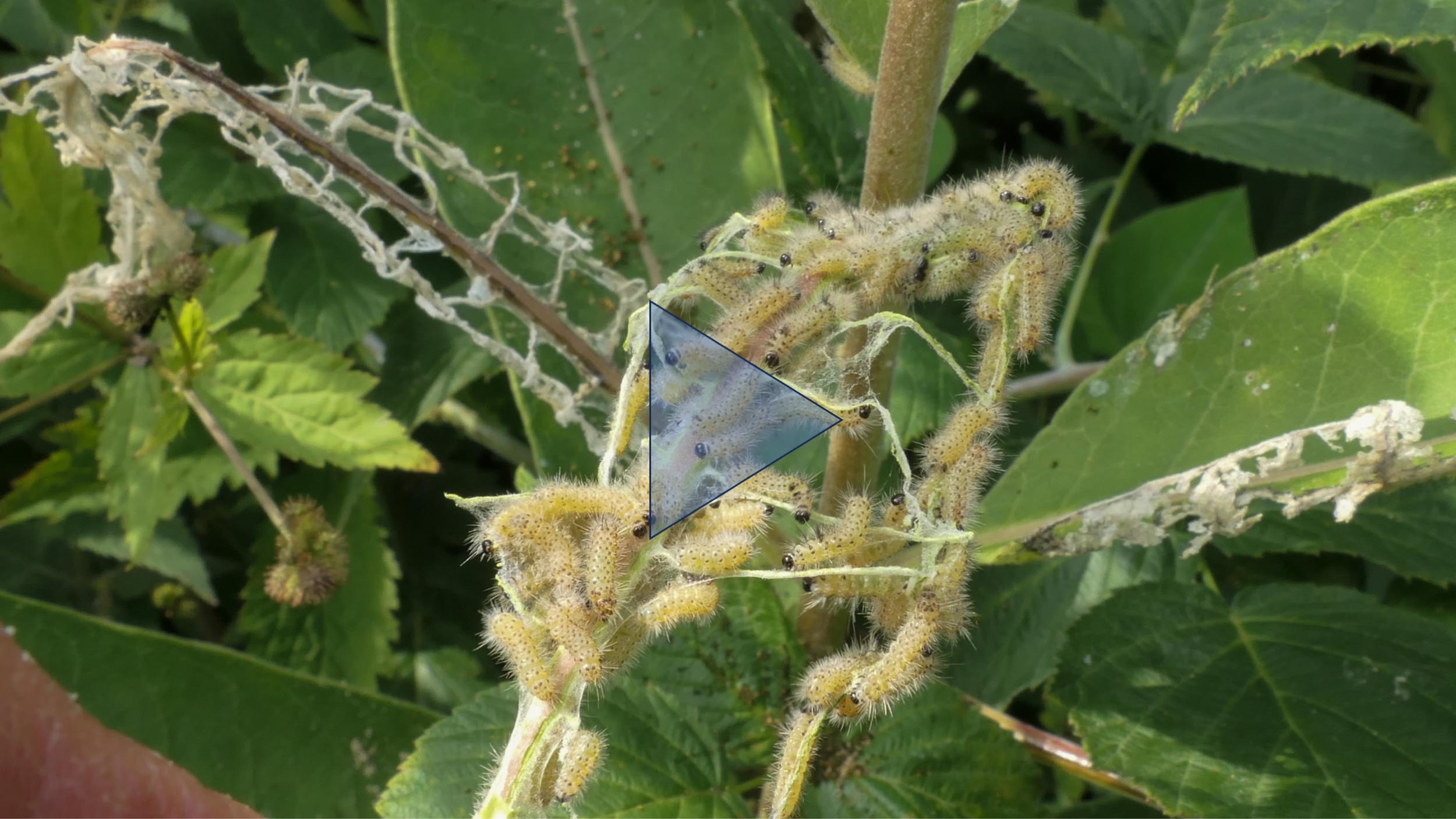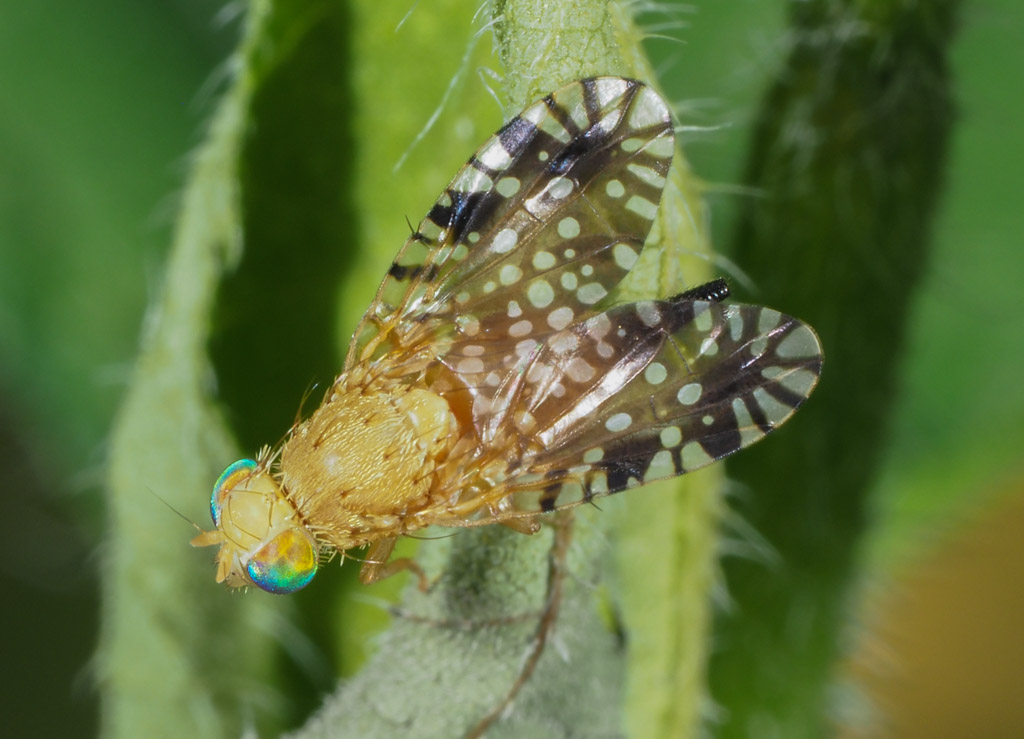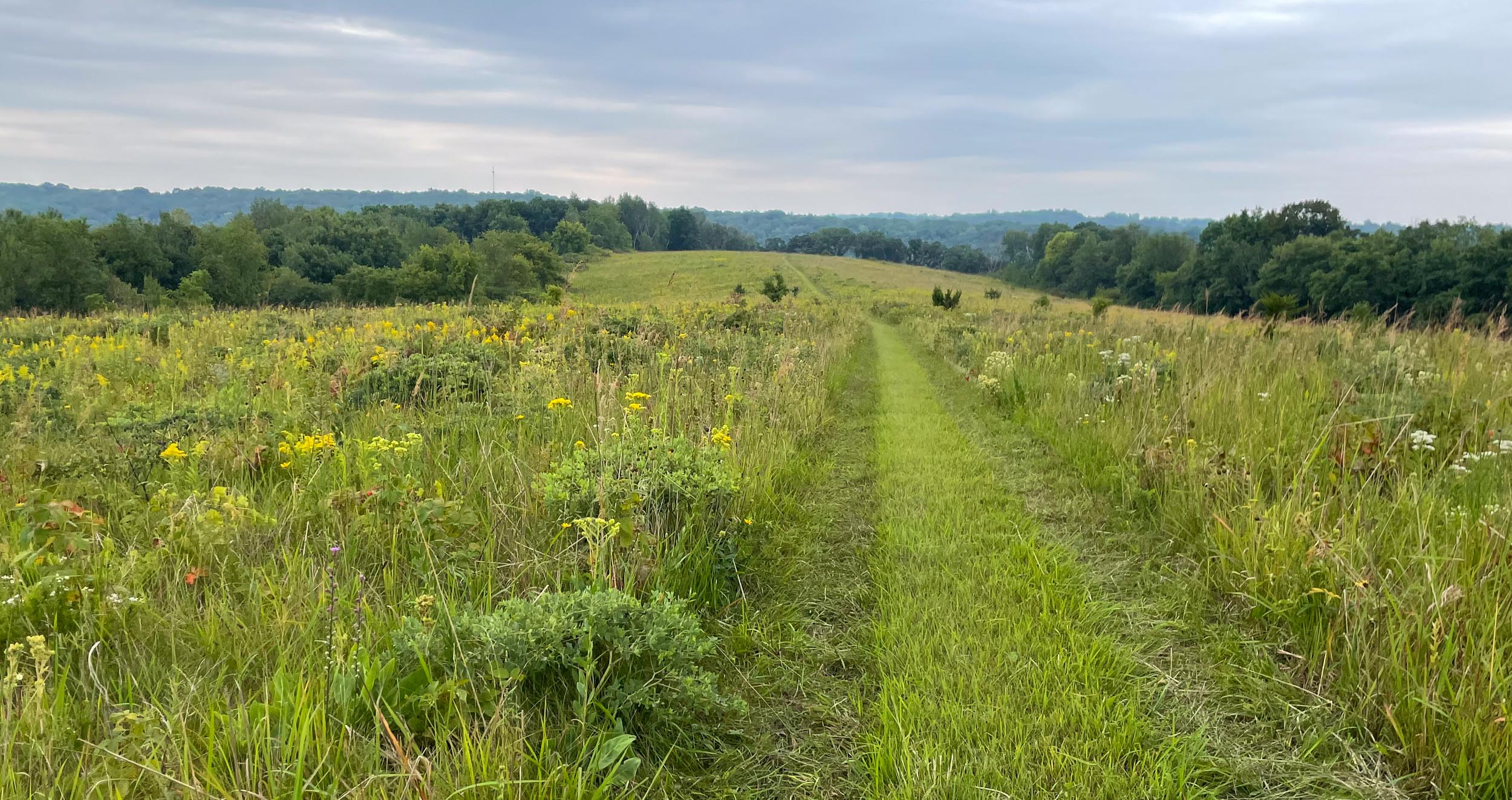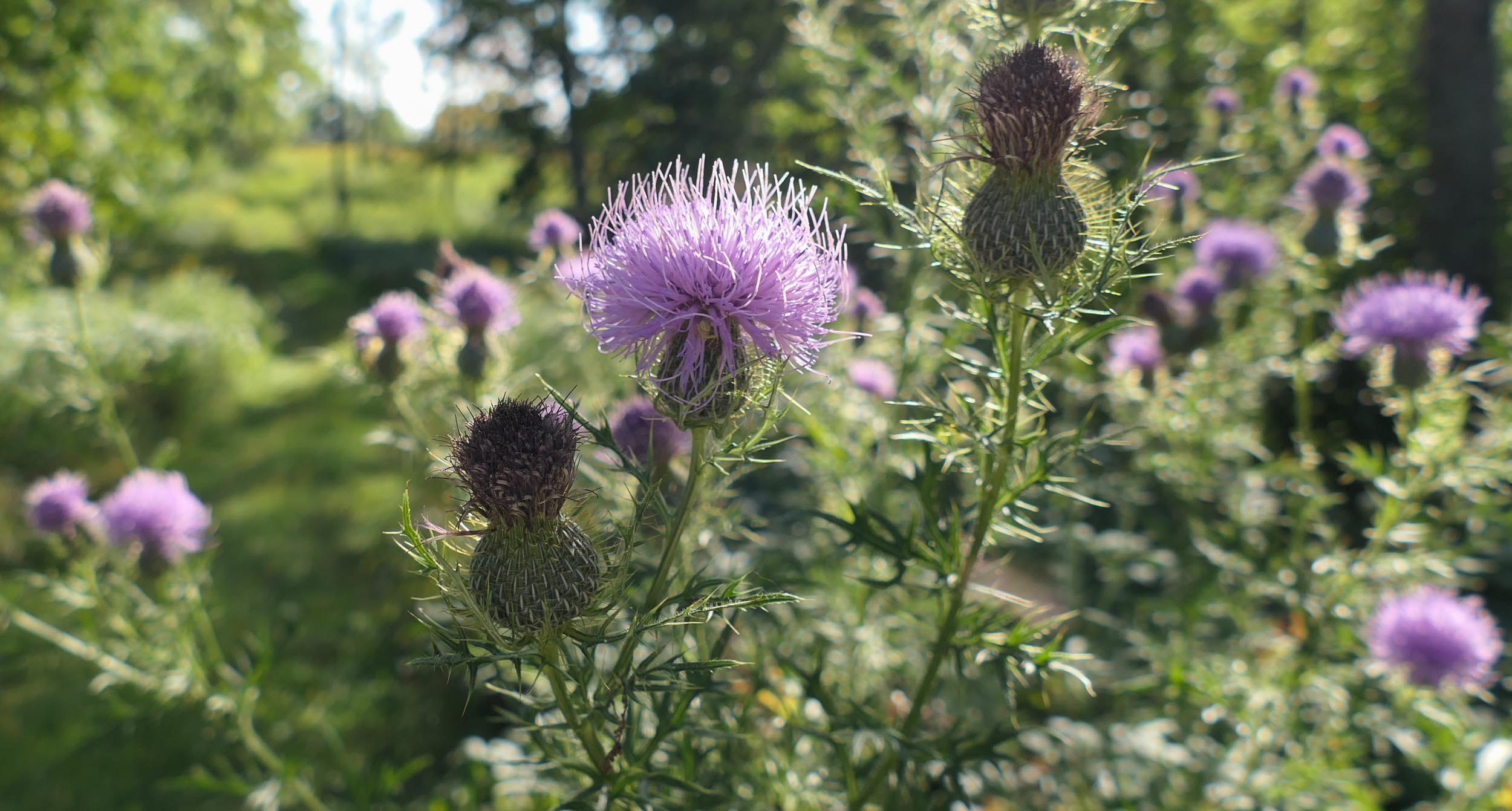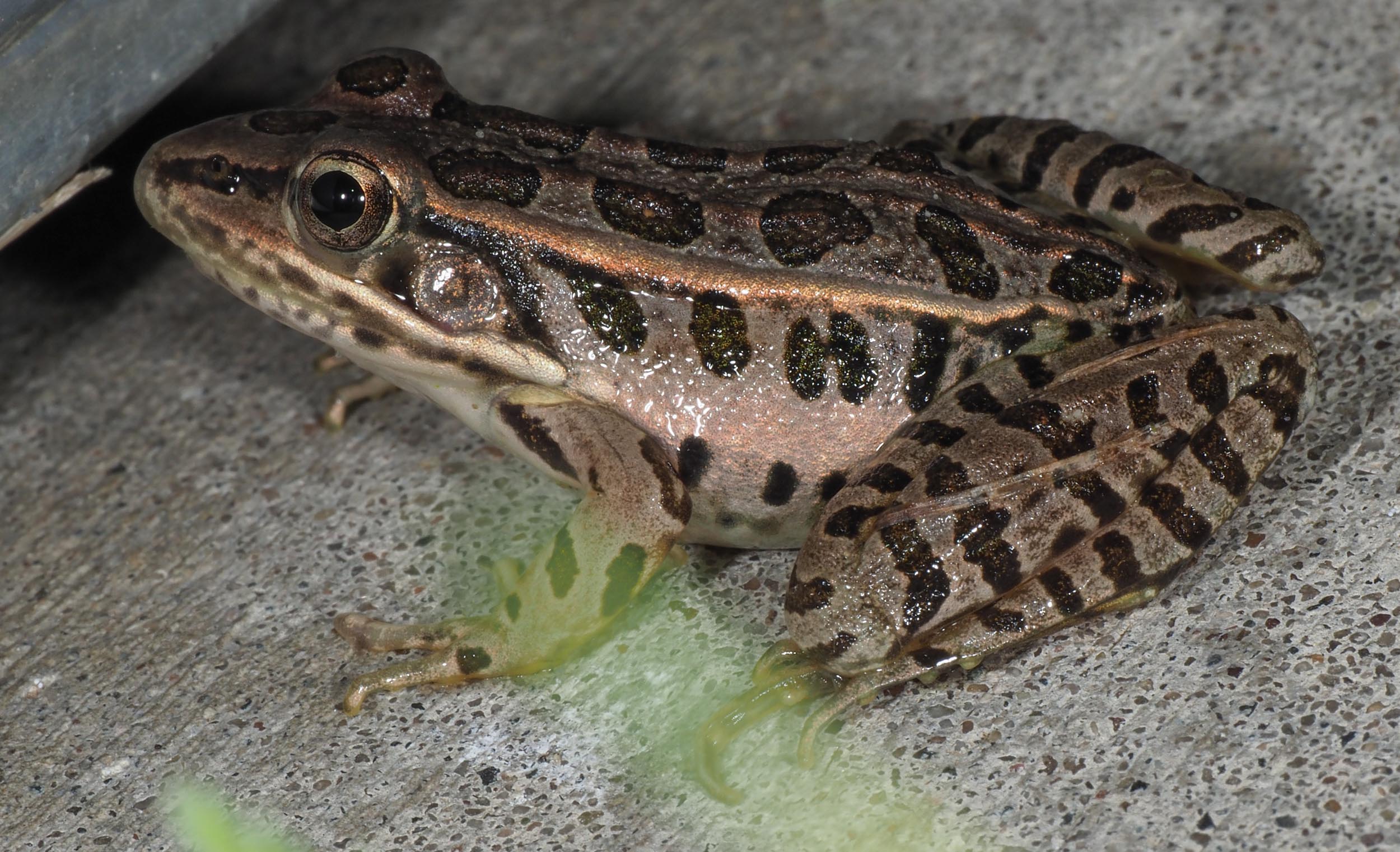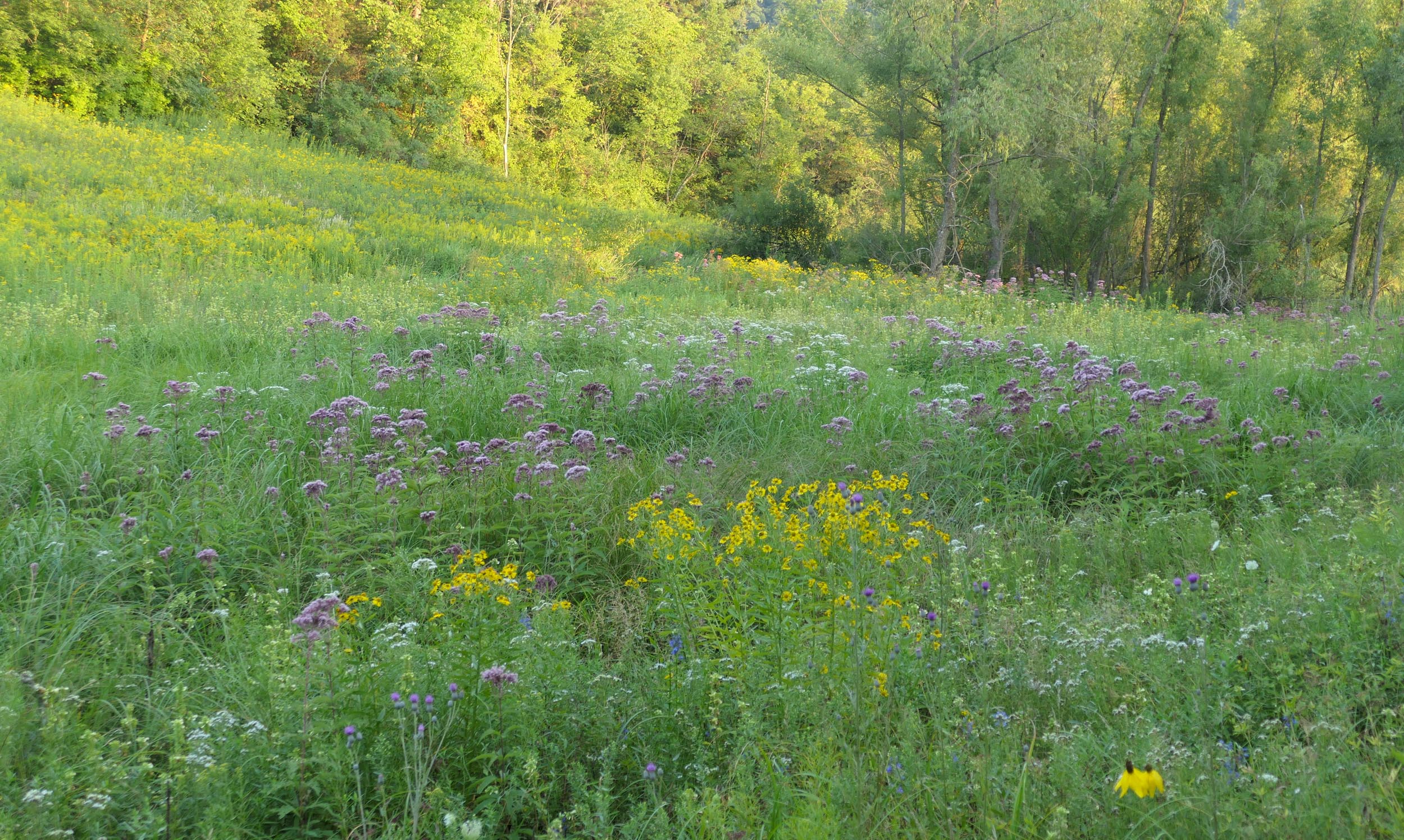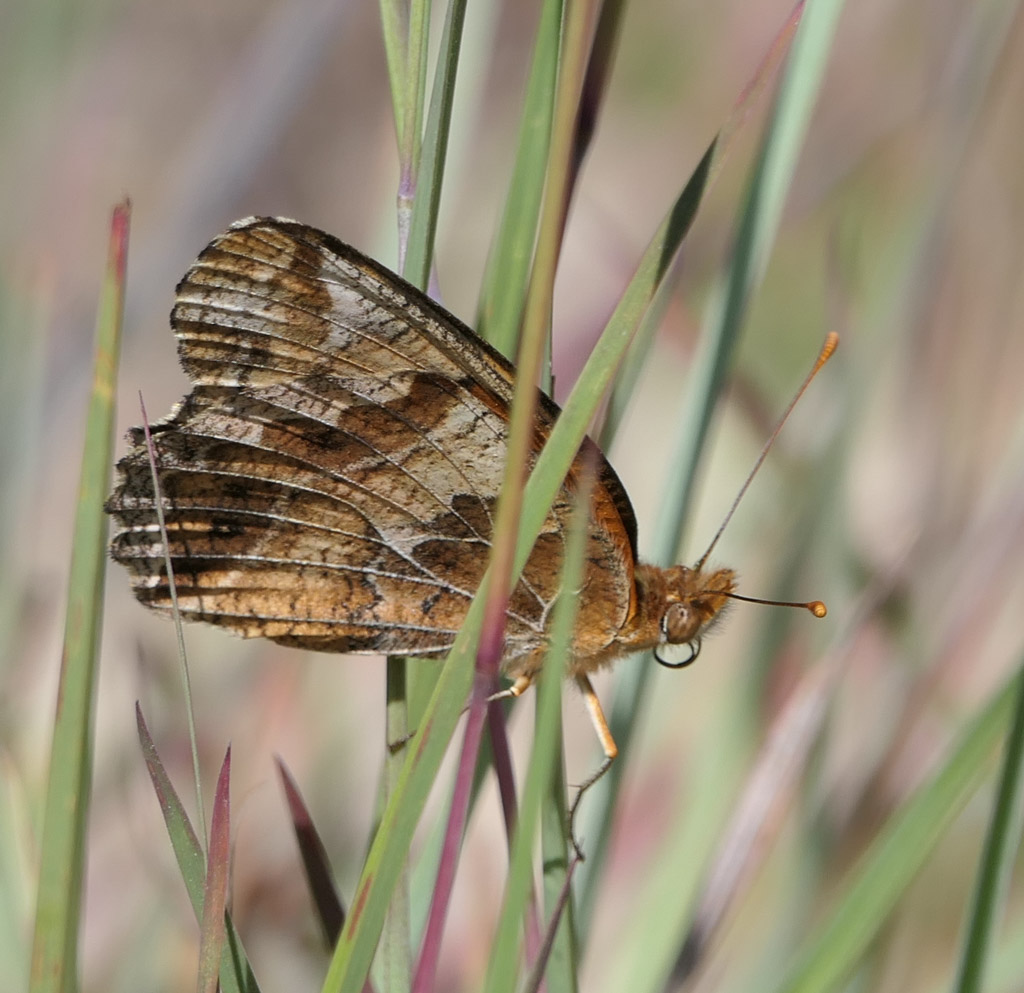Fall is coming – with cool nights and even some cool days. But we’re having hot days too, so there’s still some summer left.
One of my big recent projects has been Queen Anne’s Lace. Queen Anne’s Lace is an invasive biennial that is mostly a problem in disturbed soils, especially areas that have been newly planted or restored. Most of our planted prairies are mature enough that it isn’t much of a problem, but we mow newly planted prairies to keep it from going to seed, and I pull as much as I can from our restored remnants. This is the pulling project on Indian Grass Point.
This is Corner View Prairie – a small remnant with a wonderful view down the valley to the southwest – before I pulled the Queen Anne’s Lace.
Corner View Prairie after pulling Queen Anne’s Lace. I’m working on cutting the brush at the edges of the prairie, and Erik and Beth from Kule Region Forestry are working to clear the larger trees below and to the east, so someday it will have more open edges and be more connected to Big View Savanna.
We hadn’t mowed the Cabin Trail in a long time – we’d started calling it the ‘Jungle Trail’.
Here it is – finally – mowed again.
And our most recent project – pulling out the fences in a field near the creek so we can mow, spray and plant wetland natives. This video shows how helpful it is to have a tractor with a bucket to pull out old fence posts.
The Monarchs have started their fall migration, so we’ve been counting the ones we see on our afternoon walks. We enjoy knowing when the peak of the migration happens, and comparing the numbers we get to other years. So far this year our highest number was on August 28 when we saw 74.
I’m still finding a few Monarch caterpillars on Whorled Milkweed – this one is from just a few days ago.
Hidden Oaks Point with Whorled Milkweed
There’s more Whorled Milkweed blooming there than we’ve seen before.
Showy Goldenrod is one of the Monarchs’ favorite nectar plants during the migration.
This is a group of Milkweed Tussock Moth caterpillars I found along our afternoon walk route. Females lay their eggs in big groups on Common Milkweed. When the caterpillars are small they eat together and quickly devour the leaves they’re feeding on. The leaf on the left and the one they’re on are both nearly defoliated. This video shows how fast they can move.
I checked on them again yesterday. The caterpillars have grown a lot. Now that they’re older, they eat in smaller groups and don’t move as much.
Giant Swallowtails have been common here this summer. This is the first time I’ve found a mated pair.
Hummingbird Clearwing Moth nectaring on Monarda
This is an Orange Sulphur Butterfly caterpillar that I found crawling on my backpack. It ate legumes for a few days – mostly Canada Tick-trefoil.
It made a pupa….
and the adult emerged about a week later.
I’m practicing to get better at photographing bumblebees and other small insects during the day. They’re difficult to photograph when they’re constantly moving.
Male Brown-belted Bumblebee.
Redbelted Bumblebee – a gyne (new queen) (Much thanks to Judy Cardin for help with bumblebee IDs!)
An intricately patterned fruit fly whose larva feed on Giant Ragweed
More late summer prairie scenes…..
Western Prairie – the path out to Big View Prairie.
Sweet Joe Pye Weed in Twisted Oak Savanna
Ghost Pipe next to an old birch log
Narrows Prairie
Stiff Sunflowers and Rough Blazing Star in Buffalo Ridge Prairie
Upland White Goldenrod
Field Thistle – one of the lovely native thistles
The Knife Edge Point – the dry sandy point with Fall Witch Grass, Wormwood, and small oaks
Frogs are often attracted to my moth lights – probably looking for a meal.
Leopard Frog
Spring Peeper
The wetland is full of flowers now…
This is the wet end of East Center Valley.
False Foxglove blooms along the edge of the driveway.
Tall Sunflowers and Swamp Thistle with Pine Point in the background
Tall Sunflowers and Joe Pye Weed
Sedge Wren singing in the wetland
This is a Variegated Fritillary – an unusual butterfly for Wisconsin. I’ve only seen one here 3 other times – in 2004, 2006, and 2012.
White-lined Sphinx moth
Wetland and Pine Point
Double rainbow over Center Valley











